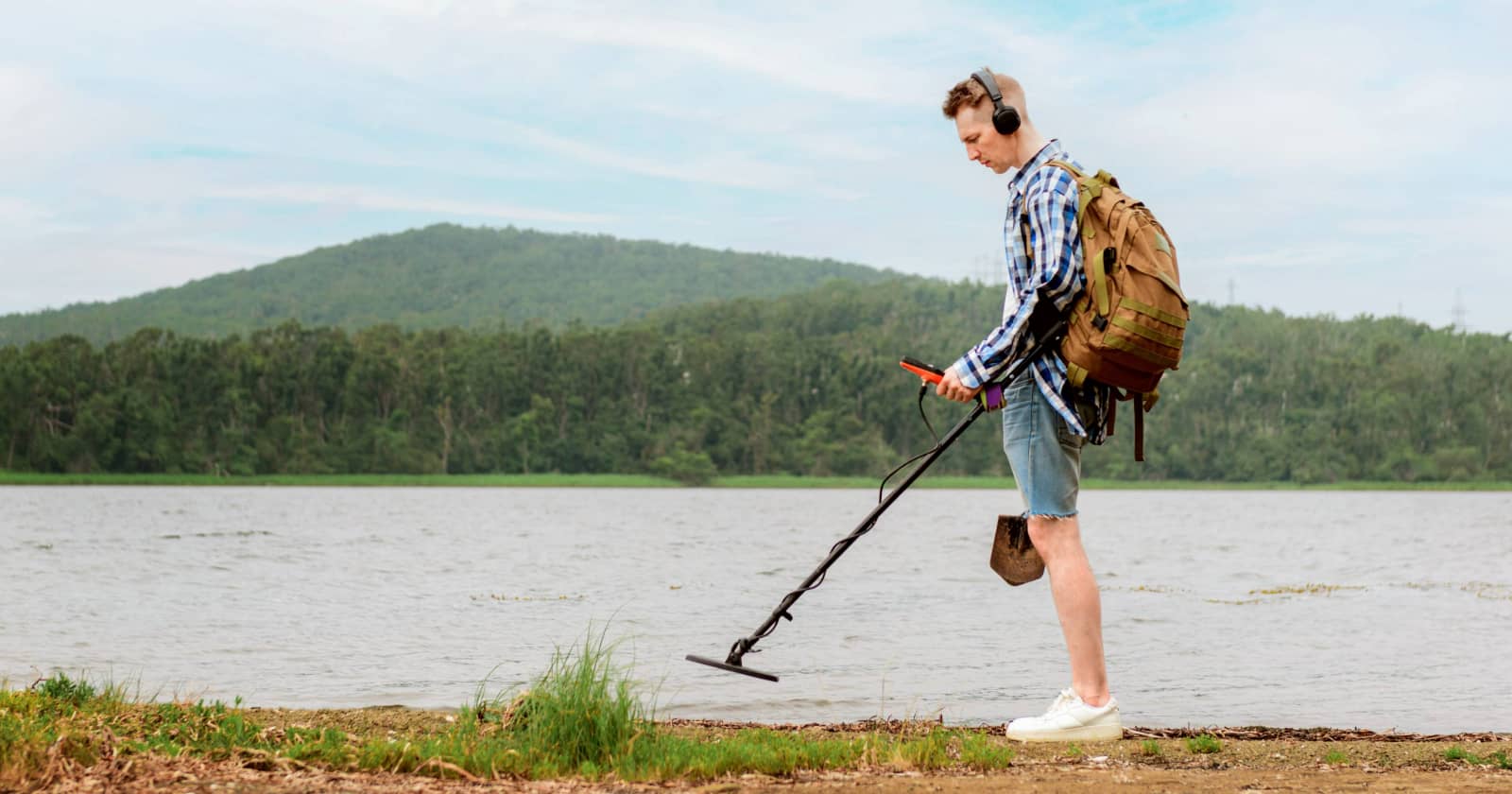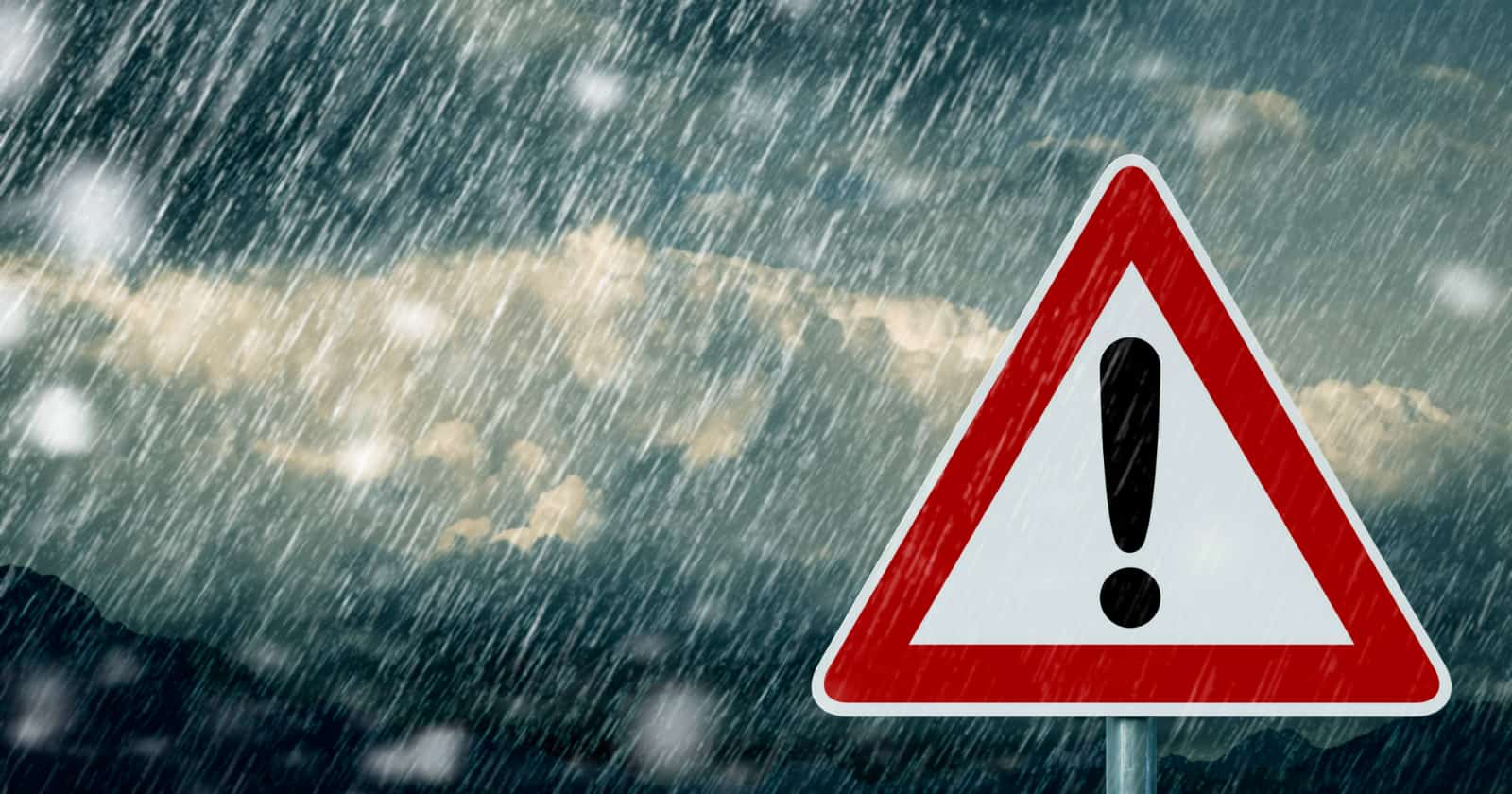There’s something about gigantic piles of sand that bring out the kid in all of us.
From hiking, running, jumping, sliding, or simply gazing out over the massive piles of sculpted grains, an RV trip to sand dunes promises lots of fun and happy memories.
You’ll find hundreds of sand dunes located around the U.S., and I want to share with you a few of the more incredible ones.
1.) Oregon Dunes National Recreation Area.
Stretching 40 miles along the Oregon coast from Florence to Coos Bay, Oregon Dunes National Recreation Area is the largest expanse of coastal dunes in North America.
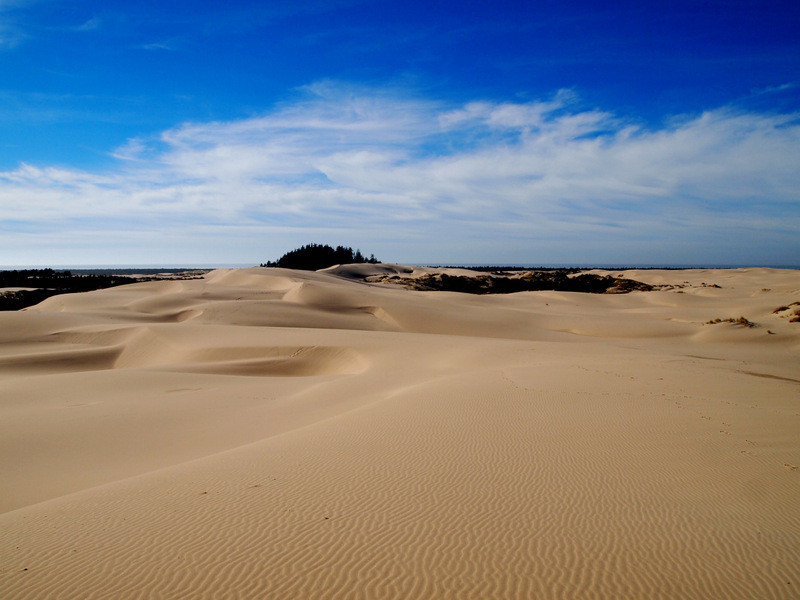
A paradise for hiking, wildlife viewing, horseback riding, and off-highway vehicle use, the dunes are easily accessible from one of the many view points, day use parks, campgrounds, or trailheads along US 101.
Hiking the Dunes
You’ll find many hiking trails in and around the dunes. One of the more popular routes is the Umpqua Trail which begins in the parking lot of the Eel Creek Campground and travels two miles to the Pacific coast.
After a quarter mile trek through a forest of low evergreen shrubs, the landscape opens up to a sea of sand.
Although the trail markers quickly disappear in the constantly shifting sand, it’s nearly impossible to get lost because you can see over the top of the dunes in every direction.
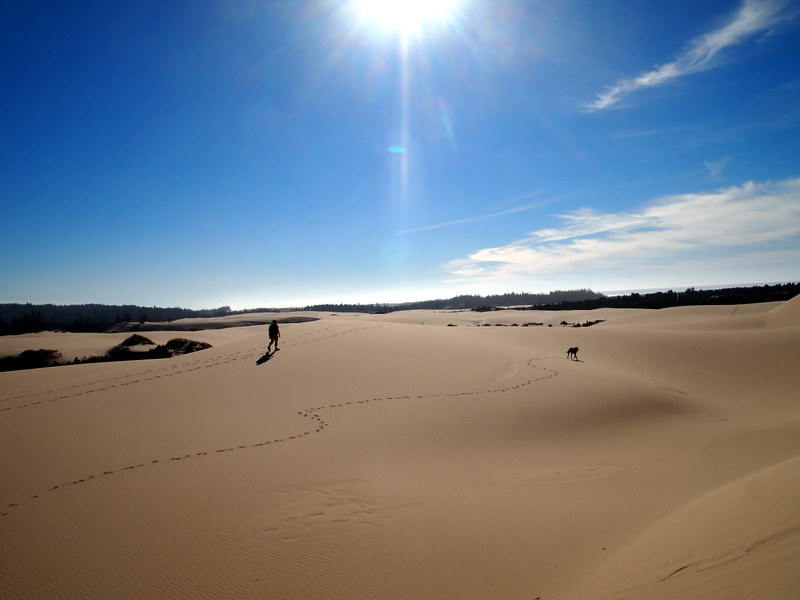
Over the hills you’ll find the ocean looming on the western horizon. Simply point your feet in that direction and head west.
Along the way, you’ll pass by small islands of trees where isolated parts of older coastal forests provide a break from the huge stretch of sand.
As you approach the ocean, the ecology shifts and sand gives way to a strip of dense evergreen forest. Follow the blue trail markers through the trees to a section of low grass covered dunes, and finally to a wild stretch of pristine beach.
Off-Highway Vehicles, Sandboarding, and More
Looking for more ways to enjoy the dunes? How about renting an off-highway vehicle and zipping across the sand?
Or you can visit the world’s first Sandboard Park where you can strap on a board and soar down the the soft sandy slopes on 40 private acres.
For a more back-to-nature experience, visit one of the many horse stables and book a trail ride through the dunes or along the beach.
RV Parking
The area around Oregon Dunes National Recreation Area is bursting with RV friendly camping options.
From the numerous Siuslaw National Forest Campgrounds, to free RV parking at the Three Rivers Casino and the many private RV parks such as the Oregon Dunes KOA you’ll easily find a spot to park.
2.) Kelso Dunes – Mojave National Preserve
On the eastern side of California, not far from the glittering lights of Las Vegas, lies the 1.6 million acre Mojave National Preserve.
You won’t find many people here, but you will see craggy granite mountain tops, volcanic cinder cones, meadows dotted with prickly cactus and spiky yuccas, forests dense with evergreens and funky shaped Joshua Trees. And yes, there is sand.
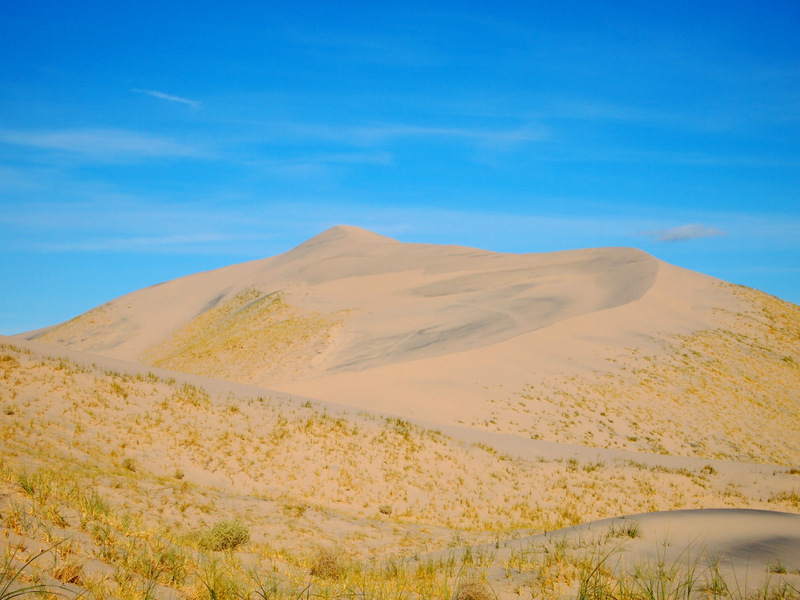
Over the last 25,000 years, the winds have carried the sand from the Mojave River sink to the base of the Pinnacle and Granite Mountains, creating the Kelso Dunes.
Hiking the Kelso Dunes
From the main parking area the dunes are quite impressive, but you’ll get an even better view from the top.
That is, if you can muster the energy to trek up roughly 1.5 miles of soft, loose sand.
There is nothing easy about this hike. As you reach the steepest section the going gets tougher, and you feel as if you are sliding two steps down for every one step up.
But once you’ve reach the top, it’s easy getting back down.
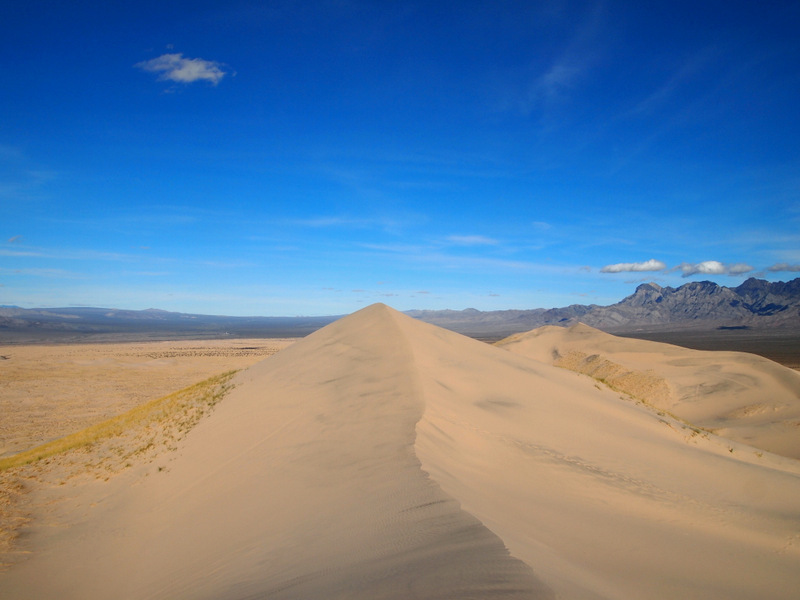
As you slide down the dunes, listen for a phenomenon called the “booming dunes” created when the sand slides down the dunes and emits a low frequency rumble.
Where to Park Your RV
The Kelso Dunes Road has a number of designated dispersed camping areas just past the preserve.
To reach these spots, you’ll need to drive 4 miles down the unpaved Kelso Dunes Road. Be sure to follow all rules of dispersed camping such as re-using existing sites and leaving the area as you found it.
You could also check out the Hole-in-the-Wall Campground, located 30 miles from the dunes and tucked amid a setting of volcanic rock.
There aren’t any hook-ups there, but you’ll have potable water, a dump station, trash receptacles, and pit toilets. Hole-in-the-wall offers 35 sites all suitable for RVs.
3.) White Sands National Monument
Quite possibly the most famous of all the sand dunes in North America, White Sands National Monument is known for its glistening, brilliant white dunes.
Stretching 275 miles around the Tularosa Basin, the white sands are made of gypsum crystals created by the evaporation of Lake Lucero and ancient Lake Otero.
Blowing winds have created a blanket of wave-like dunes that move west to east as much as thirty feet per year.
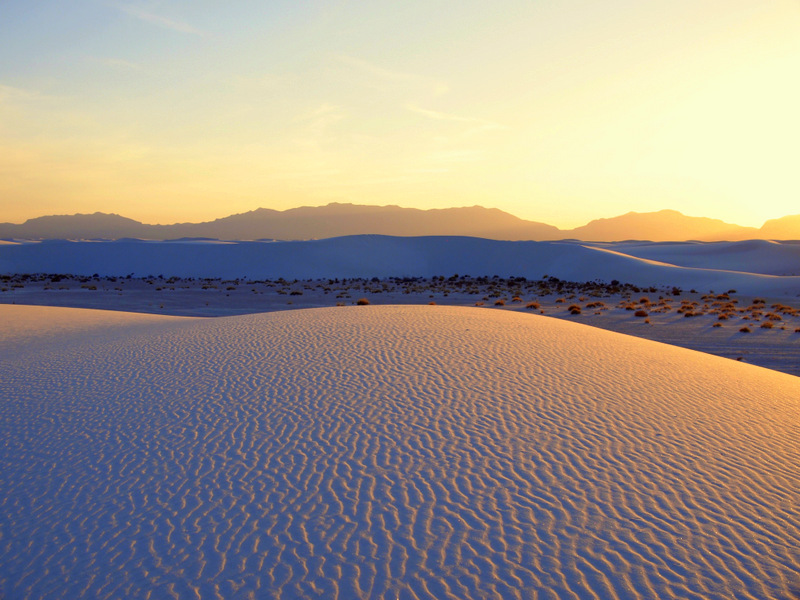
This constant movement creates patterns, ripples, and folds in hundreds of shades of white.
On a perfect day, the contrast of the brilliant blue sky with the white sand is a photographer’s dream.
And at sunset, the dunes turn a deep amber as the sun sinks behind the San Andreas Mountains.
Hiking the Dunes
You’re welcome to hike freely around nearly any of the dunes. But you might want to use one of the designated trails.
The easiest is the Interdune Boardwalk leading to a panoramic view atop the dunes. This trail is suitable for wheelchairs and strollers.
Another short hike is the Dune Life Nature Trail. This 1-mile interpretive trial is a great way learn about the plants and animals that call the dunes home.
For a longer hike, tackle the Alkali Flat Trail. This five mile hike will take you deep into the heart of the dune field, skirting the edge of what was once Lake Otero.
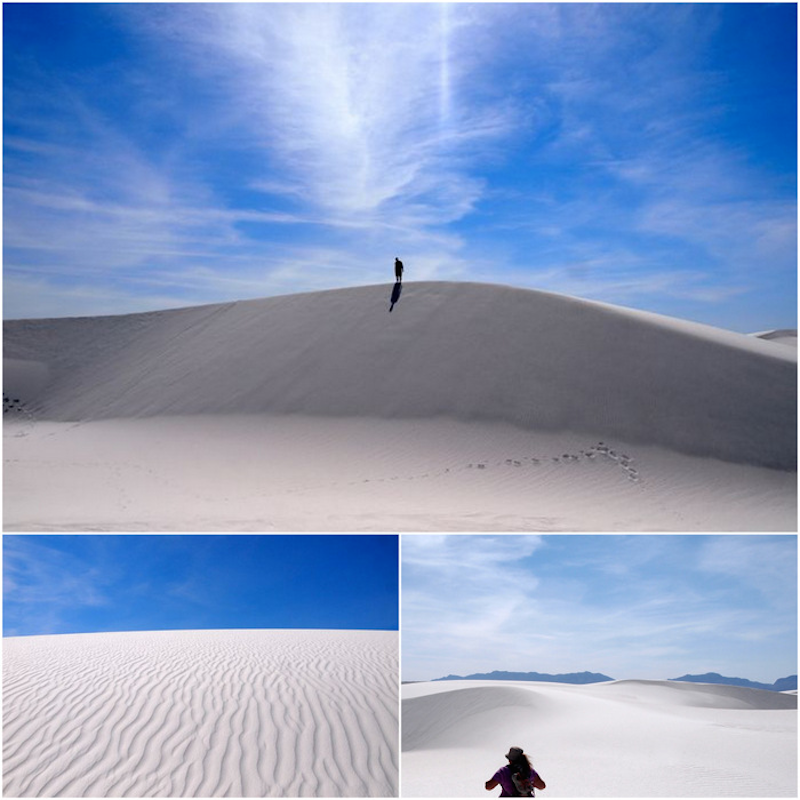
While the trail is marked by posts, the blowing winds and constantly shifting sands often cover the markers, leaving you to find your own way.
Sand Sledding
Visit the dunes on nearly any weekend, or during school vacation, and you’ll witness a scene that looks like a cross between a crowded beach on a summer day and a popular sledding hill in the middle of winter.
Families come from all over touting along their coolers, blankets, chairs, and plastic buckets and shovels.
They set up at one of the covered picnic structures or bring their own shade tent. The main difference between a day at the dunes and a day at the beach is that instead of splashing around in the waves, people climb up the dunes and slide down them.
Dune sledding is extremely popular (and extremely fun). You can buy a waxed plastic snow saucer at the gift store next to the visitor center, or bring your own.
Video of Dune Sledding at White Sands
httpv://youtu.be/3Lf0DlUp8I8
RV Camping Spots
Unfortunately, you can’t camp inside the monument. While the dunes stay open for sunset, you’ll have to leave an hour after sundown unless you have a permit to tent camp in the back country.
Probably the most popular place to park your RV is at Oliver Lee State Park in nearby Alamogordo. It’s only a 30 minute drive from the dunes and has 48 sites, some with electric and water hook-ups, a dump station, flush toilets and showers, and numerous hiking trials into the Sacramento Mountains.
There are also several private RV parks in Alamogordo including the Roadrunner RV Campground.
4.) Great Sand Dunes National Park
People come from all over to marvel at Colorado’s magnificent Rocky Mountains. They scale the peaks, dip their toes in the frigid high alpine streams, and relax in one of the many wooded campgrounds.
But did you know that you can find all that plus 30 square miles of sand dunes in the southern part of the state?
That’s right. Colorado has its very own sand dunes. Not just any sand dunes either. These are the tallest sand dunes in North America, rising 755 feet above the desert below.
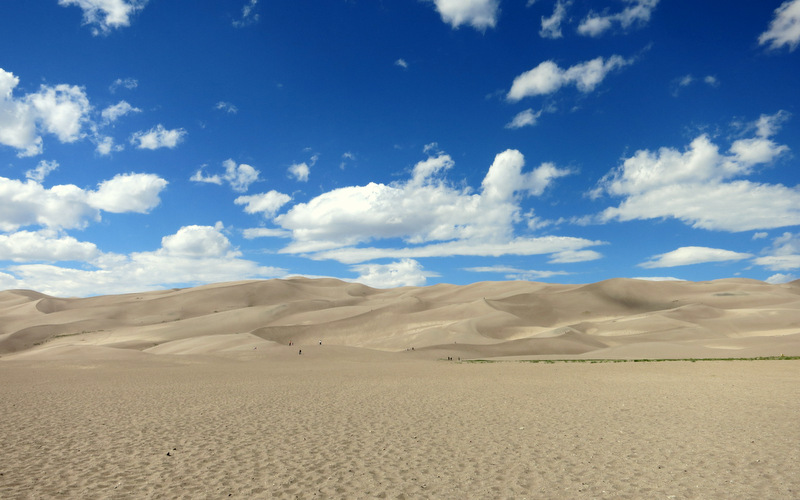
The Great Sand Dunes is a unique place where you will discover not only a giant adult-sized sandbox to play in, but also a seasonal stream that runs along the base of the dunes, all set against the striking backdrop of the rugged Sangre De Cristo Mountains.
Hiking the Dunes
From the main parking area you can access the dune field where you won’t find any trails…just mountains upon mountains of sand.
Most people cross the stream bed (which only runs in the spring) and hike around the lower part of the dunes until their legs are tired, and their shoes are filled with so much sand they can barely lift their feet.
More adventurous types tackle the hike to the High Dune which leads you up through the soft, slippery, HOT sand to the top of the second highest dune in the park.
Topping out at 699 feet, High Dune is about 50 feet short of the very tallest dune, Star Dune, but it is much more accessible, and therefore the dune that most people choose to climb.
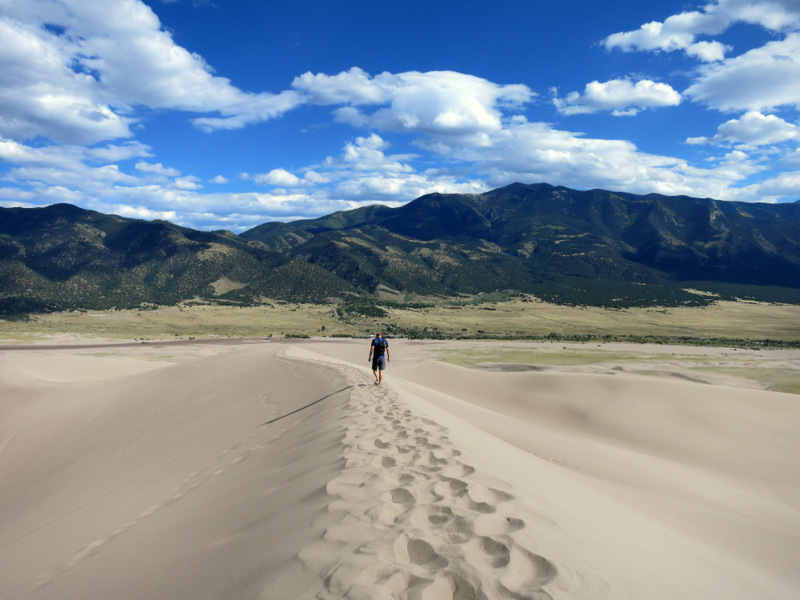
There is no defined trail, just the footprints of those who have come before you and a wooden stake at the top to let you know that you’ve made it.
Four-Wheeling
On the eastern side of the dunes you’ll find the Medano Pass 4-wheel drive road. This 12 mile road travels along the edge of the dunes and into the mountains, ending at Medano Pass.
Note: If you don’t have 4WD and high clearance (AWD will not cut it – Subarus are the number one vehicles that get stuck) you will get stuck.
But if you’ve got the right vehicle, this road is a blast.
Campgrounds Close to the Great Sand Dunes
The Great Sand Dunes has a wonderful onsite campground called Piñon Flats with 88 sites suitable for RVs 35’ and under. Half the sites are reservable from May through August.
The sites are well-spaced with large sitting areas and paved parking aprons. Many sites offer views of the dunes, and some have trees for shade.
This is a basic park with no hook ups and no shower buildings. There is an onsite dump station and fresh water spigots throughout the campground.
The best option for larger RVs is the nearby San Luis State Park. Offering up 51 sites with electric hookups, and only a 15 minute drive from the dunes, this is an excellent alternative to camping inside the national park.
I hope you’ve enjoyed this tour of four of the most amazing sand dunes in the United States. If you know of other hidden gems or want to share your experience visiting these dunes, please leave me a message in the comments.
If you liked reading about these awesome sand dunes, you’ll love the DoItYourselfRV newsletter. Get free updates, unpublished content, and special offers. Sign up now. No spam. Not ever.


